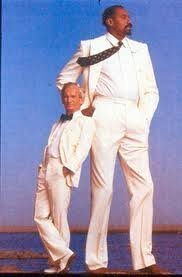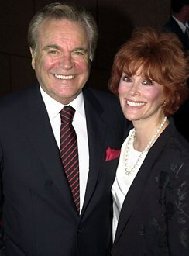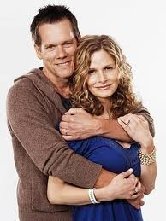In the late 17th-century in Paris the first public lanterns made their appearance in the center of the streets. They lit the road during the night. In 1763, the réverbères made their appearance. These were oil lamps with reflectors that were hung above the center of streets. The first public oil lamps in Milan, financed by revenues from a lottery, date from 1785. These were lanterns containing an oil lamp with a number of wicks. A semi-spherical reflector above the flame projected the light downwards, while another reflector, slightly concave and near the flame, served to direct the light laterally.
Friedrich Albert Winsor initially had the idea of industrializing lighting by producing gas in a factory and distributing it through a pipeline. In the first decades of the 19th century, competing gas companies laid the first gas mains in major cities. But there were fears of explosion and toxicity.
The flame fed by the gas coming out of the nozzle was intense, uniform and adjustable, white and brilliant instead of the reddish or orange of oil lamps or candles.
The drawbacks of gas lighting were overheating of the air and extremely high oxygen consumption, making it necessary to ventilate the room or isolate the flame by separating the room where the combustion took place from the room being lit. Theater audiences regularly suffered from headaches and the sulfur and ammonia formed during combustion of the gas ruined furniture.
Gas light had to be filtered by opal glass or light fabric shades. Lampshades were no longer used to direct the light but to attenuate it.
In 1879, Joseph Swan and Thomas Edison independently developed—combining and perfecting existing elements deriving from the research of Humphry Davy, De Moleyn and Göbel—the incandescent filament electric light bulb.
To disguise the intense electric light, lampshades were used. Some were made by Tiffany in colored glass. The great advantage of the electric light bulb was the absence of flame and traces of combustion, thus avoiding all risks of intoxication, explosion or fire. In the beginning, the filament was made of carbonized vegetable fibers, then bamboo fibers and finally metal alloys until, in the early 20th century, the tungsten filament invented in 1904 became established.
Lampshade types
Modern lampshades can be classified by shape, by material, by fitter, or by function.
Shades by shape
Lampshades are classified in four basic shapes: drum, empire, bell or coolie depending on their shape. A drum or cylinder shade typically features vertical sides, sometimes with a very slight incline where the top of the shade is slightly smaller than the bottom. A slightly greater incline produces a "floor" shade which is not far from the "true" drum profile. As the slope of the side of the shade increases, the design moves through the classic empire shade (or variation with straight or bell-curved sides) on towards the more pyramidal-style shape of a coolie shade.
Beyond the basics, lampshade shapes also include square, cut-corner, hexagon, gallery, oval, or scalloped shapes. Square, rectangular and oval shades appear to have these shapes when viewed from above or below. This also includes hexagonal shades and cut-corner shades which appear like square or round shades with the "corners cut off" or indented. A shade with a gallery can be of any shape but has a distinct strip around the bottom of the shade.
Some of the lampshades are as follows:
- Rustic: simple elements like linen, cork, and cotton in muted earth tones complement rustic farmhouse or cottage interiors
- Traditional: often linen, paper shades, and silk shades inside pleated and box pleated shapes
- Modern: innovative shapes like drum, square, and cylinder
- Antique & Vintage Inspired: antique reproduction lamp shades demonstrate even past era, often in textures like glass, fringe, and beaded that are not generally found in current designs.
Lampshades by material
Lampshades are made of fabric, parchment, glass, Tiffany glass, paper or plastic. Common fabric materials include silk, linen and cotton. Fabric shades are reinforced by metal frames to give the lampshades their shape, while paper or plastic shades can hold their shape without support. For this reason, paper shades can be more fragile than fabric shades. Darker shades sometimes add a reflective liner such as gold or silver in order to maximize light output.
Lampshade fitters
A "fitter" describes how the lampshade connects to the lamp base. The most common lampshade fitter is a Spider fitter. Spider fitters are set on top of a lamp harp, and secured with a finial. The harp is typically seated below the socket and two arms rise up around the light bulb and join at the top, where it provides resting support for the spider fitter itself. The fitter is built into the lamp shade frame itself and sits on top of the harp. Other fitters include clip-on (for either regular bulbs or candelabra bulbs), Uno fitters which are attached to the lamp itself below the light bulb, and notched-bowl fitters which support the use of a glass reflector bowl.
Consideration of light bulb heat
A lamp shade's surfaces have varying proximity to the light bulb or light source itself, depending on the size and shape of the shade. With larger shades this is less of a problem, since the shade provides an ample funnel for the movement of air up through the shade, whereby heat from the bulb leaves the top of the shade through the opening. However, with smaller shades consideration has to be given to proximity of the shade surface to the bulb, especially in miniature shades used on chandeliers. Here, and especially with shades which have sloped sides, the distance between the surface and the bulb reduces making the risk of overheating a concern. The heat generated by incandescent light bulbs can scorch fabric lampshades and can crack glass shades. All of these problems can be avoided by the simple expedient of installing LED lights. These save energy, last longer and emit very little heat.
- 3 1/3 cups water
- 1 1/2 cups long-grain or whole-grain rice, uncooked
- 2 tablespoons vegetable oil
- 3 cloves garlic, minced
- 2 large tomatoes, cut into chunks
- 2 scallions, sliced
- 1 teaspoon salt
- 1/4 teaspoon black pepper
- 1/4 cup ranch salad dressing
- In a large saucepan over high heat, bring water to a boil. Add rice, then reduce heat to low and simmer 20 minutes, or until water is absorbed; set aside.
- In a large skillet over medium heat, heat oil; saute garlic 2 to 3 minutes. Add tomatoes and saute 1 to 2 more minutes.
- Add rice, scallions, salt, and pepper; mix well. Add salad dressing and mix until heated through. Serve immediately.
Whether baked, fried or mashed, these taters bring on the flavor. They are a staple of many meals, too. Filling a void for appetizer dishes and working double duty at suppertime, these versatile root veggies satisfy and fill us up.
According to the International Potato Center, more than 4,000 varieties of potatoes grow around the world. Not only that, but they also come in a variety of beautiful colors and sizes. This starchy carbohydrate comes with no fat or cholesterol and is loaded with Vitamin C and potassium. Depending on your dietary needs and how you prepare your potatoes, this vegetable offers what many are looking for. However, with 26 grams of carbohydrates, it’s a no-no in a low-carb lifestyle.
When it comes to the health specs of a potato, we tend to tank the benefits when we prepare them. We fry them and load them with toppings like cheese, sour cream, and butter. Who doesn’t love a loaded baked potato? Ok, ok. You can all put your hands down, now.
HOW TO OBSERVE NATIONAL POTATO DAY
With so many ways to savor a potato, it shouldn’t be too hard to find a way. However, we do have a few tateriffic ways to get you started:
- Host a baked potato buffet. Line up all the best toppings such as cheese, jalapenos, bacon, chopped onions, chili, grilled chicken or ranch.
- Tried French fries dipped in soft, vanilla ice cream. If you’ve never had it before, you will be surprised.
- Swap out your corn chips with French fries and build a new kind of nacho. Think beer brats, sauerkraut, Swiss cheese and sour cream for German flair. Aim for a bit of Irish celebration by using corned beef.
- Share your favorite recipes. You know, the ones you always go to when you’re craving potatoes. Or, try a new recipe and give it a review.
- Make a delicious potato soup. With so many different recipes, one of them is sure to satisfy!
- Visit your favorite restaurant and pile on the potatoes. Whether it’s an entree or an appetizer, be sure to give the eatery a shout-out!
- Check out this Home Fries recipe.
NATIONAL POTATO DAY HISTORY
The nation’s comfort food has been celebrated since at least 2006. Before that National Potato Day celebrations had been cropping up throughout the year all across the country.
Potato FAQ
Q. Which is healthier, the white potato or the sweet potato?
A. The sweet potato edges out the white potato thanks to fiber and vitamins. However, both are quite nutritious. How we prepare these root vegetables makes a bigger impact on our diet than the vegetables themselves. Frying vs. baking, toppings and more will tip the scales on nutrition quickly.
Q. Are there other potato holidays?
A. You bet your sweet potato there is! November is Sweet Potato Awareness Month. In February, we celebrate National Eat a Sweet Potato Day and in March we celebrate National Tater Day. And we can’t forget National French Fry Day in July.
Q. How are potatoes prepared?
A. Potatoes can be prepared in a number of ways. Besides baking, boiling, roasting and frying, potatoes are also used to make bread, pasta, hash browns, salads, pancakes, soup, croquettes, among other preparations.
Q. What country produces the most potatoes?
A. In 2016, China produced the most potatoes at more than 99 million tonnes. The United States comes in 5th behind India, Russia, and Ukraine.


















1 comment:
Happy potato day!
Today’s recipe is inspirational. Loved reading about lampshades. They are art
On the fifth anniversary when God released Gerald from pain, blessings to you.
XO, Lydia.
Post a Comment